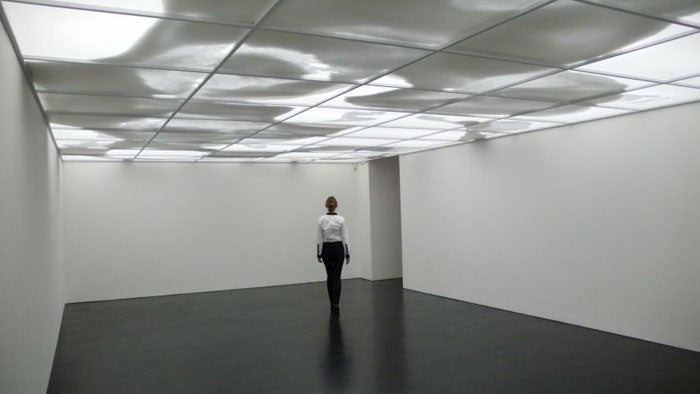Rivane Neuenschwander, Stephen Friedman Gallery, London
Now you see it, now you don't

Why do we love art so much? One reason is that it has the wonderful capacity to survive us, perfect and perfectly self-sufficient, by entire millennia sometimes – think of those wonderful Chinese warriors forever standing guard, with such poise and serenity – and we take pleasure, comfort, pride and security in that.
As yet another fragment of the East Coast of England quietly slips away into the sea with a heartfelt suck and hiss, somewhere, not very far away, a Gauguin, with all those lovely, sun-nurtured Tahitian girls doing precious little, still hangs on the wall. Michelangelo and Leonardo do the same kind of thing. They feel bigger than we as human flesh could ever be because of what they did; the monumental presence of their greatest works is more assuredly representative of more than the best that we could ever achieve.
This is why post-war German painters such as Baselitz and Penck experienced a kind of inner horror when they thought of their Germanic past, the greatness of its culture; that's why they had to begin again, so stutteringly. It had all gone, all that civilisation that had underpinned everything, had been blown away by unspeakable barbarities.
Entering into this debate quietly, and, as it were, side-long, comes a young Brazilian artist called Rivane Neuenschwander. She has thought about all these kinds of issues, too, and she has decided, through her various practices as an artist, to take a slightly different line. She glories not so much in monumental survival of the Michelangelo kind. She sees art more as a passingly poignant representation of a fragile perishability in order to bring her audiences up short, and to help them to think about what art is and does in relation to the human, and to the Earth itself.
Her work doesn't endure – it passes away before our very eyes. Quite literally. Art does not need to be static, or even monumental, she reminds us. Art can just as easily shift and remake itself, partially dissolve, and even die away altogether. Art, in short, could come to resemble more closely both the perishability of humanity and the fragile, ever-shifting nature of the world whose custodians we are. All things must die away, she seems to be telling us. Furthermore, is not an art that seems to stand in resistance to such impulses inclined to ossify?
As I am pondering on these matters, I stare at what looks like a strangely shifting map on the wall. It is all squared-up like a painting, flat to the wall, but in fact it is a video projection. The piece is called Contingent, and it seems to have begun life as a map of the world because the recognisable shapes of the seven continents are still in place – just about. The reason I say just about is to do with what is happening to these continents. They seem to be under attack by an army of ants, and these ants are tearing the world apart, devouring it before our very eyes. The United States of America has degenerated into a kind of sad boot- shape; Australia has disappeared altogether – all I can see is a mass of ants on the tiniest speck of land. They are behaving like a rugby scrum on speed. Why are these ants, whose busyings have been manipulated by time-lapse photography, so keen on eating the Earth? Because these continents were built from honey, yummy yum. That's why those ants love them so much.
Elsewhere in the show, in a gallery-engulfing ceiling installation called Continent-Cloud, an entire, looming cloudscape re-engenders itself above our heads – rather like clouds tend to do anyway. These strange shapes at times remind you of some crazy surrealist ink-blot game: two pages get squeezed together, and when you open them up again, they resemble some weird, winged creature whose left side seems to be a mirror image of its right side.
Everywhere you wander in this quietly thought-provoking show, something – often very subtly – is perishing or changing into something else. Art, after all, need not outlive us, not necessarily.
Get ready to feel just a touch more queasy about being alive.
To 12 April (020-7494 1434)
Subscribe to Independent Premium to bookmark this article
Want to bookmark your favourite articles and stories to read or reference later? Start your Independent Premium subscription today.

Join our commenting forum
Join thought-provoking conversations, follow other Independent readers and see their replies
Comments